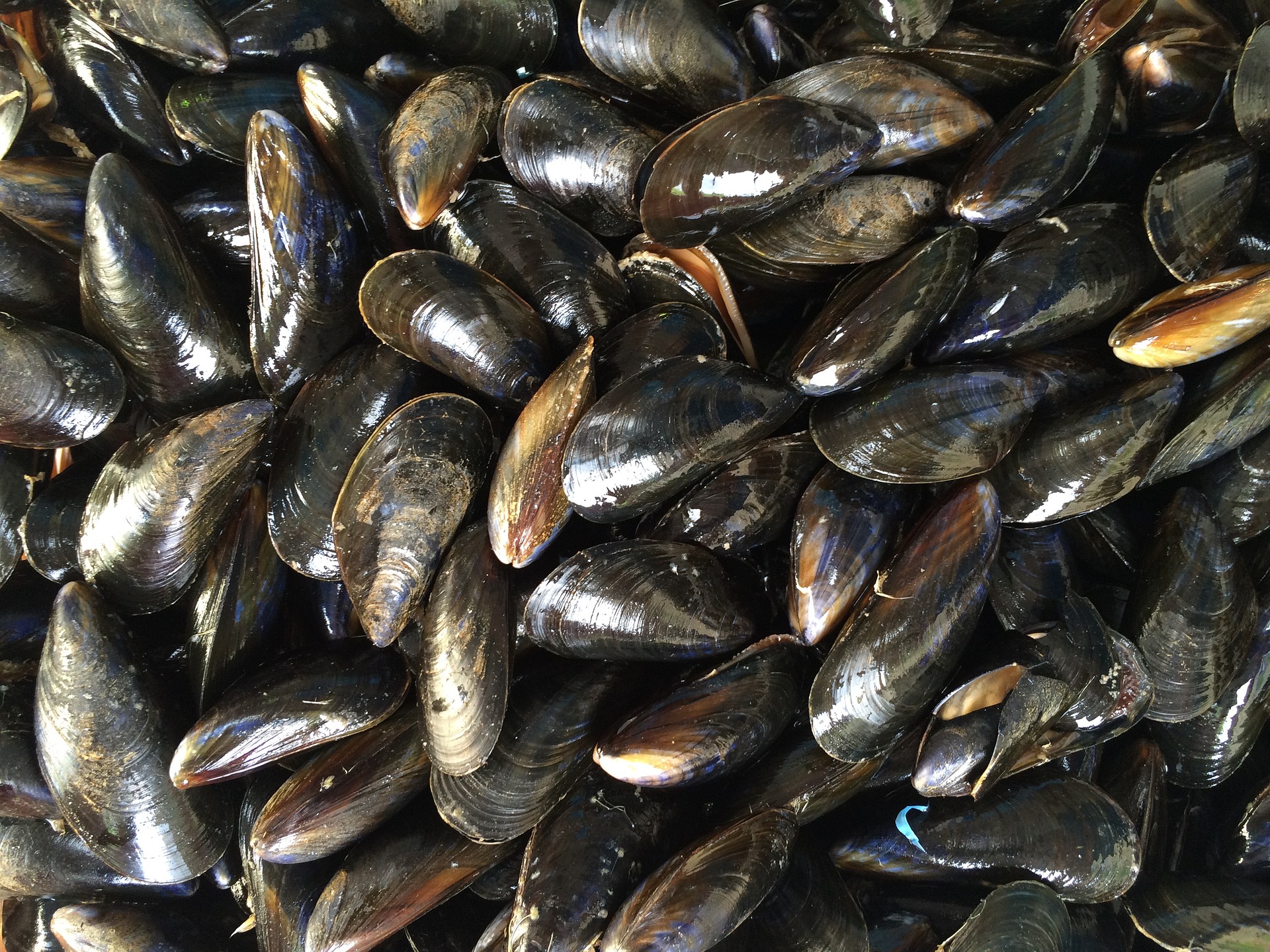story by Helen Hill

This month we spotlight work by a collaboration between European and US researchers, who have been using MITgcm in their study of how a changing climate could impact Mediterranean mussel beds.
Global climate change has already had observable effects on the environment. Glaciers have shrunk, ice on rivers and lakes is breaking up earlier, and trees are flowering sooner. Changing climate is also shifting plant and animal ranges. In consequence, there is a growing need to forecast the ecological impacts of global climate change at scales relevant to policy and management.
While considerable efforts have been made to forecast the likelihood of elevational and latitudinal changes in species range boundaries, there is increasing awareness that many of the first consequences of environmental change may lie not just in lethality, but also in altered patterns of physiological performance such as growth and reproduction. Notably, such responses to ongoing environmental change are being observed not just at range boundaries, but also well within range limits.
In “A mechanistic approach reveals non linear effects of climate warming on mussels throughout the Mediterranean sea” published in the journal Climate Change, researchers Valeria Montalto, Brian Helmuth, Paola M. Rutti, Alessandro Dell’Aquila, Alessandro Rinaldi, and Gianluca Sarà, recognize that if scientists simply focus on range limits they may miss highly significant current and future impacts.
In their study the team brings to bear three interconnected models (climatic, biophysical and energetic) to estimate changes in growth, reproduction and mortality risk by 2050, for three commercially and ecologically important members of the mussel family at 51 sites in the Mediterranean Sea.
To simulate the climatic conditions and related changes of coastal Mediterranean water masses, the authors use the PROTHEUS model suite (Artale et al., 2010) which incorporates MITgcm. Simulating these allows Montalto et al. to explore possible shifts in the composition of mussel communities directly affected by these changes. PROTHEUS, which was developed by ENEA (Italy) specifically for the Mediterranean Sea, comprises the RegCM3 atmospheric regional model and the MITgcm ocean model, coupled through the OASIS3 coupler (Artale et al. 2010; Dell’Aquila et al. 2012).
The team’s results predict highly variable responses (both positive and negative) in the time to reproductive maturity and in the risk of lethality among species. Interestingly, responses of individual sites do not conform to simple latitudinal gradients and the authors posit that their method highlights such variability that would not be detectable by methods focused only on lethal limits and/or range boundaries. It also supports the notion that there will likely be both winners and losers, ie that species vary substantially in their vulnerability to changing conditions.
To find out more about this work contact Valeria or Brian.
References
Vincenzo Artale, Sandro Calmanti, Adriana Carillo, Alessandro Dell’Aquila, Marine Herrmann, Giovanna PisacanePaolo M. Ruti, Gianmaria Sannino, Maria Vittoria Struglia, Filippo Giorgi, Xunqiang Bi, Jeremy S. Pal, Sara Rauscher, The PROTHEUS Group (2010), An atmosphere–ocean regional climate model for the Mediterranean area: assessment of a present climate simulation, Clim Dyn (2010) 35: 721. doi: 10.1007/s00382-009-0691-8
Alessandro Dell Aquila, Sandro Calmanti, Paolo Ruti, Maria Vittoria Struglia, Giovanna Pisacane, Adriana Carillo, Gianmaria Sannino (2012), Effects of seasonal cycle fluctuations in an A1B scenario over the Euro-Mediterranean region, Clim Res 52:135-157, doi: 10.3354/cr01037
This Month’s Featured Publication
- Valeria Montalto, Brian Helmuth, Paolo M Ruti, Alessandro Dell’Aquila, Alessandro Rinaldi, Gianluca Sarà (2016), A mechanistic approach reveals non linear effects of climate warming on mussels throughout the Mediterranean sea, Climatic Change (2016). doi: 10.1007/s10584-016-1780-4
Other New Publications this Month
David S. Amundsen, Nathan J. Mayne, Isabelle Baraffe, James Manners, Pascal Tremb (2016), The UK Met Office GCM with a sophisticated radiation scheme applied to the hot Jupiter HD 209458b, Astronomy & Astrophysics, https://arxiv.org/pdf/1608.08593.pdf
Paul F. Choboter, Mariangel Garcia, Dany De Cecchis, Mary Thomas, Ryan K. Walter and Jose E. Castillo (2016), Nesting Nonhydrostatic GCCOM within Hydrostatic ROMS for Multiscale Coastal Ocean Modeling
Zhe Liu, Lei Lin, Lian Xie, Huiwang Gao (2016), Partially implicit finite difference scheme for calculating dynamic pressure in a terrain-following coordinate non-hydrostatic ocean model, Ocean Modelling, Volume 106, October 2016, Pages 44–57, doi: 10.1016/j.ocemod.2016.09.004
Valeria Montalto, Brian Helmuth, Paolo M Ruti, Alessandro Dell’Aquila, Alessandro Rinaldi, Gianluca Sarà (2016), A mechanistic approach reveals non linear effects of climate warming on mussels throughout the Mediterranean sea, Climatic Change (2016). doi: 10.1007/s10584-016-1780-4
Robert Nazarian and Sonya Legg (2016), Internal Wave Scattering in Idealized and Realistic Continental Slope Canyons, 69th Annual Meeting of the APS Division of Fluid Dynamics Volume 61, Number 20 Sunday–Tuesday, November 20–22, 2016; Portland, Oregon abstract
Inti Pelupessy, Ben van Werkhoven, Arjen van Elteren2, Jan Viebahn, Adam Candy, Simon Portegies Zwart, and Henk Dijkstra (2016), The Oceanographic Multipurpose Software Environment, Geosci. Model Dev. Discuss., doi: 10.5194/gmd-2016-178, 2016
Do you have news about research using MITgcm? We are looking for contributions to these pages. If you have an interesting MITgcm project (ocean, atmosphere, sea-ice, physics, biology or otherwise) that you want to tell people about, get in touch. To make a post, contact Helen

